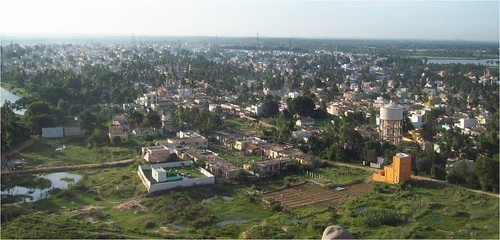/topics/urban-water
Urban Water
Bangalore garbage finds dumping place in Mandur: Civic body promises better infrastructure projects in exchange - Roundup of the week’s news (March 4- March 10, 2013)
Posted on 11 Mar, 2013 11:42 PMBangalore garbage finds dumping place in Mandur: Civic body promises better infrastructure projects for communities living there
Awareness and brainstorming on urban wetlands of Maharashtra by TERI on the occasion of World Wetlands Day 2013
Posted on 10 Mar, 2013 11:29 PMLets paint our cities green ! - Issues of collective effort come to the fore at the organic urban gardening conference in Chennai
Posted on 06 Mar, 2013 10:25 AMThe maddening pace of cities have the potential to drive one up the wall. But, there are options - to unwind and to mend the disconnect. Tending to plants is a popular hobby and it is a fact that a sizeable number of city dwellers have taken to gardening in the past, finding solace in twines and tendrils.
An evaluative study on the informal water distribution system in Kaula Bandar slum in Mumbai- A paper in BioMed Central Public Health Journal
Posted on 03 Mar, 2013 07:22 PMAs a result of rapid urbanisation, majority of migrated population is forced to settle in places which are not legally recognised by state authorities. These areas thus lack in basic services like water supply and sewerage. Consequently, the slum dwellers often resort to illegal methods to avail these services.
Mapping potential groundwater zones using remote sensing and GIS techniques
Posted on 01 Mar, 2013 11:43 AMAuthor: K.M.Seenivasan
Catch Every Drop: The Water Warrior contest
Posted on 27 Feb, 2013 06:08 PMImagine there's no water
It isn't hard to do
Nothing to cook or clean with
And no flushing too!
Imagine all the people
Living life in vain
Water in India: Situation and prospects: Book release by UNICEF, FAO and SaciWaters
Posted on 26 Feb, 2013 06:13 PMThe report released at UNDP, New Delhi on February 14, 2013 attempts to consolidate the significant amounts of information available on water and sanitation in India and also aims to examine the key current challenges in the sector; both the threats and opportunities for the water sector in India.
Dr Aidan Cronin, Water, Sanitation and Hygiene Specialist, UNICEF gives a sneak preview to the report
Video courtesy: UNICEF
Living on water: An architect constructs homes, offices and even a golf course as floating buildings, using water as a workable layer
Posted on 22 Feb, 2013 03:06 PMImagine looking out of your window onto the blue sea, living in a building in the midst of water! Koen Olthius, a Dutch architect’s passion for water has transformed this magical image into reality.
Assessing the land use change and its impact on water resources: A study on the Mula and Mutha rivers catchment area in Pune
Posted on 17 Feb, 2013 09:11 PMLand use changes hydrologic system and have potentially large impacts on water resources. An assessment in an area with seasonally limited water availability and which is subject to rapid socio- economic development and population growth will provide an exemplary view on the local impacts of major recent developments in India. In this backdrop this paper analyzes past land use changes between 1989 and 2009 and their impacts on the water balance in the Mula and Mutha Rivers catchment upstream of Pune. The aim of the paper is:
- assess the land use changes between 1989/1990 and 2009/2010
- analyze the impacts of these changes on the long-term water balance components in the Mula and Mutha Rivers catchment upstream of the city of Pune.
Influence of anthropogenic contamination on fluoride concentration in groundwater: A study of Mulbagal town, Kolar district, Karnataka
Posted on 15 Feb, 2013 04:53 PMGroundwater contamination is a serious, but relatively ignored issue in the country. This contamination occurs in either through geogenic or anthropogenic means. Fluoride contamination is one such example of geogenic contamination that is widely found in the Kolar district of Karnataka. However, the fluoride levels in the town of Mulbagal are lower than those in the surroundings. Earlier, a study was conducted on the impact of pit toilets on the groundwater in the area. The present paper investigates the presence of any link between these two phenomena.





